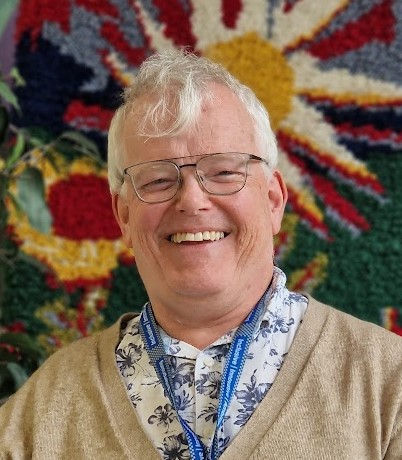36. Film training with Aram Atkinson
- Fred Inglis

- Oct 24
- 2 min read

The importance of videos to our work
One of the first things Irene Tuffrey-Wijne told me when I joined Kingston University was this: when it comes to sharing our research, a video can be just as impactful as a journal article.
That may not come as a surprise to anyone familiar with this team’s work. We use video a lot. Videos help us make information about our projects accessible, ensure our colleagues with learning disabilities are visible and heard, and reach audiences beyond academic circles.
This summer, over lunch in the office, Irene and I found ourselves discussing our shared ambition to get better at making videos. I remember saying, “How do you actually make a good video?” Irene replied, “Let’s find out!”
Learning to make better videos
Irene arranged for Aram Atkinson, (filmmaker and lecturer) to deliver two days of film-making training for the team. Four of us took part: Irene, Andrea, Jonny and me. From the outset, Aram approached the training not as a generic workshop, but as a tailored, thoughtful exploration of what film-making could mean for us: our team, our work, our ethos, and our audiences. He tuned into our context immediately, and that responsiveness made all the difference.
Here’s a snapshot of what we covered:
Day 1 – Storytelling
Before we touched any cameras or discussed equipment, Aram brought us right back to the fundamental starting point of film-making: storytelling. How do we connect powerfully with our audience? What makes a film resonate?
We explored:
Who our audience(s) are and where we might find them
Story structure frameworks
The purpose of different camera shots and how to use them effectively
How to create storyboards
Day 2 – Shooting
On Day 2, we were confronted with the reality (challenges and fun!) of film-making. Some of the things we covered included:
How to optimise lighting and sound in our typical filming environments (our office and surrounding areas at the University)
Operating equipment, including cameras, boom mics, reflectors
On-set communication
How to use a clapperboard (Aram was impressed with the one I had brought as a prop for our most recent Print & Deliver video)
Reflecting on our equipment needs: What do we need to make good videos for our purposes?


It’s important to emphasise just how exceptional Aram was in tailoring the training to our (undeniably unique) team. Despite only just meeting us, he quickly grasped what we were looking to learn and responded thoughtfully to our very specific film-making needs. Over just two days, we absorbed so much! Between the four of us novice film students, we could probably attempt a feature-length documentary just on the impact of this training! But with The DAPPLE Project keeping us all very busy, we may have to put that idea on hold for now. Instead, we’ll share some of the key things we took away from working with Aram.

As you can see, Aram’s training was genuinely transformational for us as a team. It’s pushed us to raise the bar for our future videos, in how we plan them, make them, and share them. Keep an eye out for what we do next!







Comments